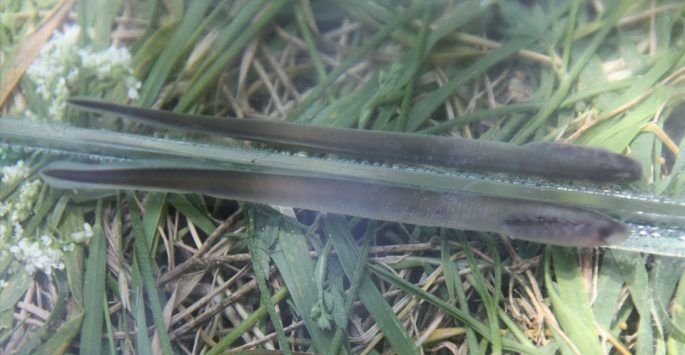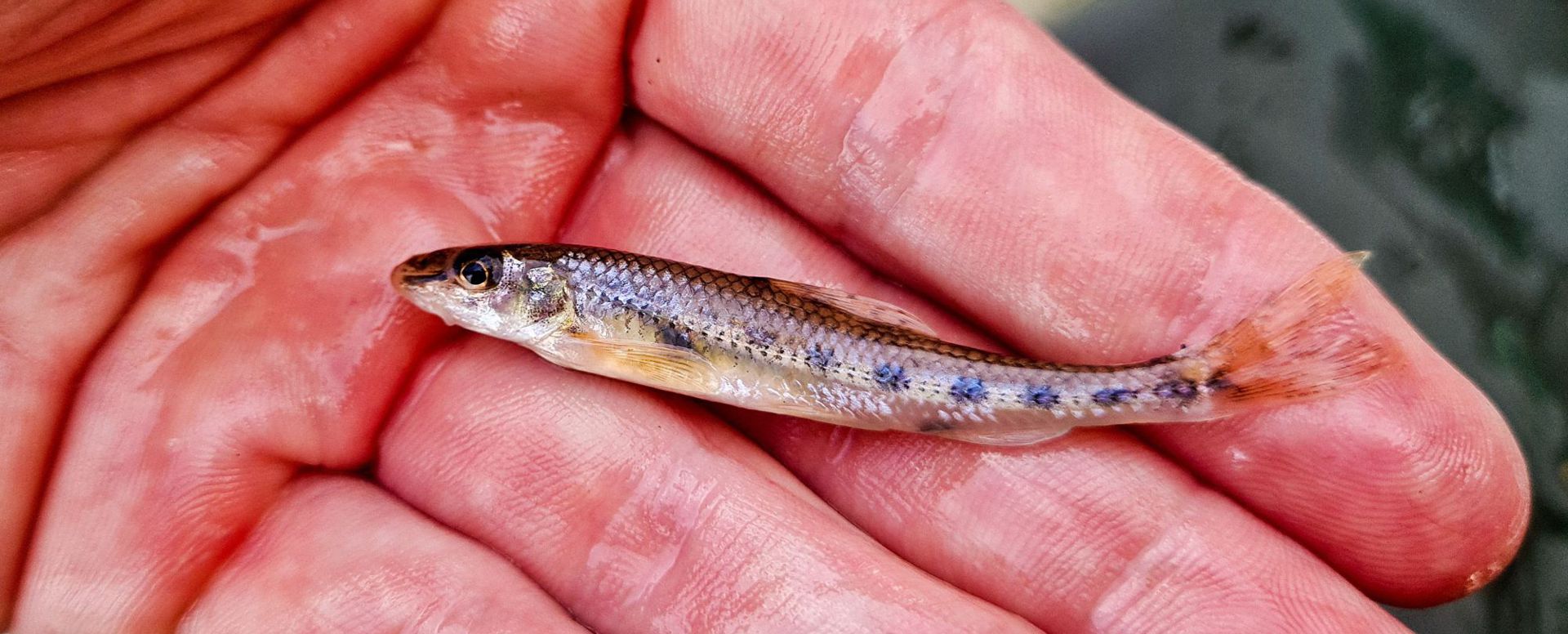One of the documents underlying the ecological reconstruction measures was the report entitled The study of the conservation status of the fish population on the Gilort River. The study focused mainly on species of community interest, namely: southern barbel, golden spined loach, brook lamprey, white - finned gudgeon, danube whitefin gudgeon and european bitterling.
Samples were collected from 21 sampling sections (13 at the Natura 2000 site, 8 outside it) arranged to cover all types of existing micro-habitats along the upstream-downstream gradient. They included both the Gilort River and its tributaries (Galbenul, Blahnița). To verify the habitat conditions, the following abiotic and physico-chemical parameters were monitored: dominant sediments, shore conformation, water gloss width, pH, dissolved oxygen, conductivity, water temperature.
The capture of individuals was done by reversible electronarcosis, according to the scientific fishing authorization previously obtained from ANPA. The captured individuals were determined, and then biometric measurements were performed (standard length, up to the base of the caudal fin), all specimens being subsequently released in the area where they were fished.
Quantitative indicators of the state of the fish population were:
- List of fish species caught / station;
- Number of fish species caught / station;
- Total number of specimens captured / station;
- SPIC frequency (F) - the number of samples in which the given species appears in relation to the total number of samples;
- Numerical abundance (Year) SPIC - the number of individuals of a species in the analyzed sample compared to the total number of individuals belonging to all species;
- Dominance (D) SPIC..
In determining the conservation status of species of Community interest, the following parameters were considered: the range of the species, the status of the population of the species, the status of the habitat of the species and future prospects of the species.
 The total number of fish species caught in the campaigns was 18, four of them present in the Standard Sheet, and two in the Habitats Directive, being caught a total of 3646 specimens. For the European bitterling, only three specimens were reported outside the site, and in the case of the Danube lamprey two juvenile specimens, so that for the two species the population parameters were not calculated. The conservation status was assessed XU - the conservation status from the point of view of the population of the species is unknown, but it is not in any case favorable (it is unfavorable - inadequate or unfavorable - bad). For the other four species of interest, the situation was as follows: XU – starea de conservare din punctul de vedere al populației speciei este necunoscută, dar nu este nici într-un caz favorabilă (este nefavorabilă – inadecvată sau nefavorabilă – rea). Pentru celelalte patru specii de interes, situația a fost următoarea:
The total number of fish species caught in the campaigns was 18, four of them present in the Standard Sheet, and two in the Habitats Directive, being caught a total of 3646 specimens. For the European bitterling, only three specimens were reported outside the site, and in the case of the Danube lamprey two juvenile specimens, so that for the two species the population parameters were not calculated. The conservation status was assessed XU - the conservation status from the point of view of the population of the species is unknown, but it is not in any case favorable (it is unfavorable - inadequate or unfavorable - bad). For the other four species of interest, the situation was as follows: XU – starea de conservare din punctul de vedere al populației speciei este necunoscută, dar nu este nici într-un caz favorabilă (este nefavorabilă – inadecvată sau nefavorabilă – rea). Pentru celelalte patru specii de interes, situația a fost următoarea:
- The Romanian barbel was represented by a number of 1866 specimens, its state of conservation being evaluated as favorable;
- The Danube whitefin gudgeon was present in a number of 39 specimens, conservation status - unfavorably inadequate;
- 56 specimens of Sabanejewia bulgarica were fished in the studied area, state of conservation - unfavorably inadequate;
- The Kessler's gudgeon totaled a number of 31 specimens in the area, conservation status - unfavorably inadequate.
The report also identifies a number of pressures and threats towards species and habitats at the Gilort River Natura 2000 site. Among them, the most important are the extraction of sand and gravel, changing the structure of watercourses, natural biotic and abiotic processes.

